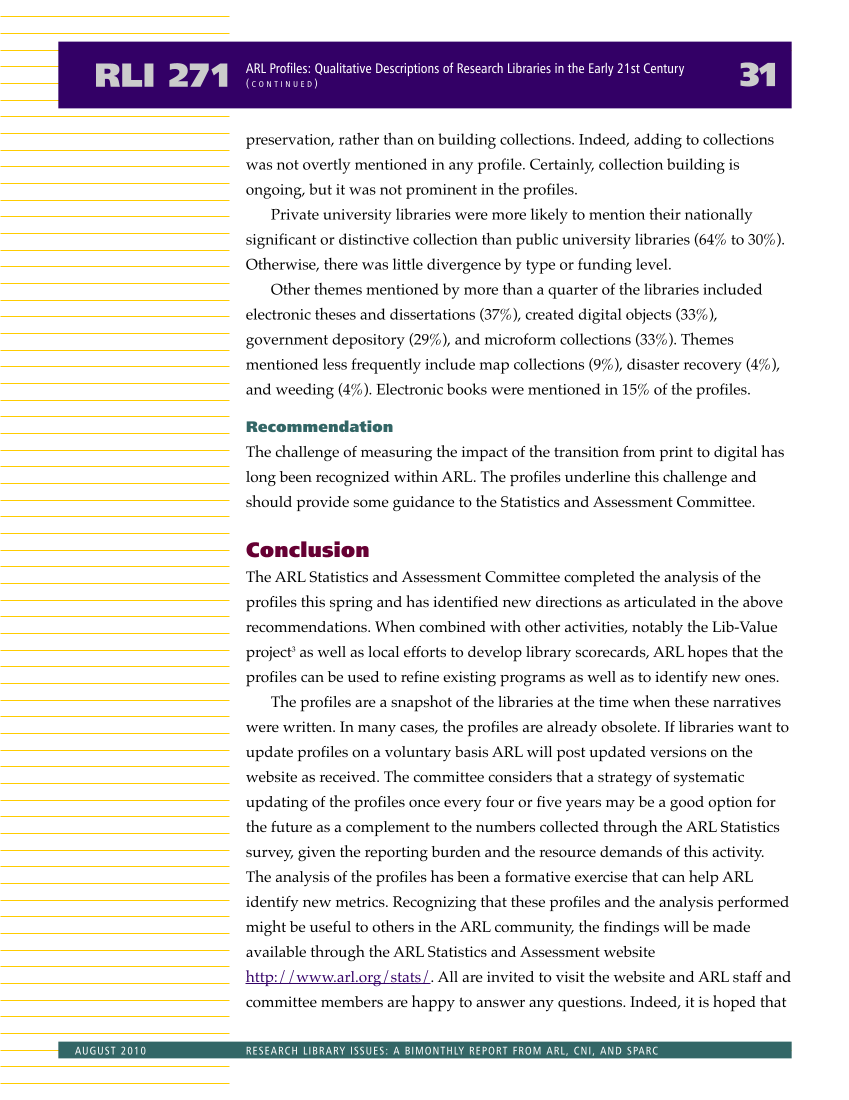preservation, rather than on building collections. Indeed, adding to collections was not overtly mentioned in any profile. Certainly, collection building is ongoing, but it was not prominent in the profiles. Private university libraries were more likely to mention their nationally significant or distinctive collection than public university libraries (64% to 30%). Otherwise, there was little divergence by type or funding level. Other themes mentioned by more than a quarter of the libraries included electronic theses and dissertations (37%), created digital objects (33%), government depository (29%), and microform collections (33%). Themes mentioned less frequently include map collections (9%), disaster recovery (4%), and weeding (4%). Electronic books were mentioned in 15% of the profiles. Recommendation The challenge of measuring the impact of the transition from print to digital has long been recognized within ARL. The profiles underline this challenge and should provide some guidance to the Statistics and Assessment Committee. Conclusion The ARL Statistics and Assessment Committee completed the analysis of the profiles this spring and has identified new directions as articulated in the above recommendations. When combined with other activities, notably the Lib-Value project3 as well as local efforts to develop library scorecards, ARL hopes that the profiles can be used to refine existing programs as well as to identify new ones. The profiles are a snapshot of the libraries at the time when these narratives were written. In many cases, the profiles are already obsolete. If libraries want to update profiles on a voluntary basis ARL will post updated versions on the website as received. The committee considers that a strategy of systematic updating of the profiles once every four or five years may be a good option for the future as a complement to the numbers collected through the ARL Statistics survey, given the reporting burden and the resource demands of this activity. The analysis of the profiles has been a formative exercise that can help ARL identify new metrics. Recognizing that these profiles and the analysis performed might be useful to others in the ARL community, the findings will be made available through the ARL Statistics and Assessment website http://www.arl.org/stats/. All are invited to visit the website and ARL staff and committee members are happy to answer any questions. Indeed, it is hoped that RLI 271 31 ARL Profiles: Qualitative Descriptions of Research Libraries in the Early 21st Century ( C O N T I N U E D ) AUGUST 2010 RESEARCH LIBRARY ISSUES: A BIMONTHLY REPORT FROM ARL, CNI, AND SPARC



















































